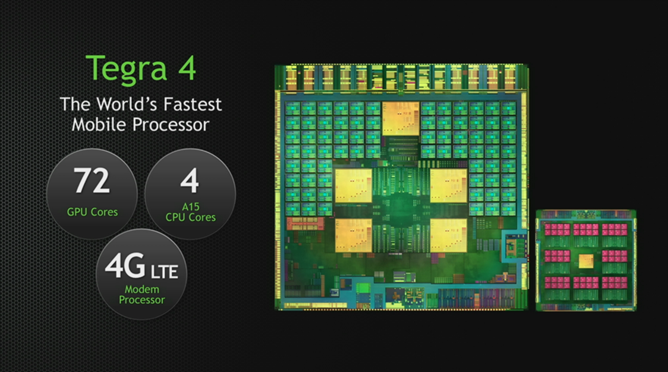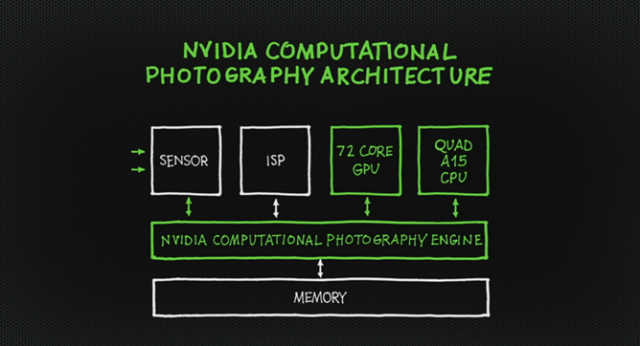
The first big mobile announcement of CES is here, and it’s a shot against the bow of Samsung and Qualcomm. During a late Sunday evening press conference, Nvidia announced the Tegra 4 SoC, a combination of four Cortex-A15 CPU cores (and an extra low-power core a la Tegra 3) and a 72-core GPU with six times the graphical prowess of its predecessor.
The first device with a Tegra 4 inside will be the company’s own Project Shield, a 5-inch tablet with an attached gaming controller. But the primary market for the Tegra 4, coming later this year, will be tablets, at first, followed by smartphones. The 28nm manufacturing process is finally thermally-efficient enough to be used in smartphones while maintaining optimal battery life, and the chipset natively supports LTE connectivity via an external Icera modem.
Nvidia is touting the Tegra 4 as the world’s fastest mobile processor, but at this point we don’t know whether its CPU prowess can best Qualcomm’s quad-core Krait architecture, nor Samsung’s Exynos 5 offerings. Traditionally, mobile Nvidia chipsets have excelled in the graphics department — hence a separate Tegra Zone for gamers with titles optimized for the chipsets — but its CPU performance was mediocre at best. By introducing a potent combination of ARM’s Cortex-A15 CPU and its own 72 CUDA core graphics processor, Nvidia stands a real chance against the incumbents, and may even cross over into mainstream smartphone territory, a title Qualcomm will be extremely reluctant to surrender.

But the Tegra 4 advantage doesn’t stop at specs; the company is claiming an improved camera experience, too. It has come up with a way to shoot two photos in one frame (with compatible modules), enabling a wait-free HDR mode for each shot. HDR, which stands for High Dynamic Range, often comes at the cost of CPU and GPU processing; Nvidia’s technique, dubbed Computational Photography Capability, “[fuses] together the processing power of the GPU, CPU and the camera’s image-signal processor.” We can’t wait to see the results.
On the periphery, there is also support for 4K display output and what Nvidia touts as “Unprecedented Power Efficiency,” which “reduces backlight power while delivering superior visuals.”
Via: Nvidia
MobileSyrup may earn a commission from purchases made via our links, which helps fund the journalism we provide free on our website. These links do not influence our editorial content. Support us here.


